Coffee in Pictures: Tree to Cup
 Thursday, December 16, 2010 at 10:07AM
Thursday, December 16, 2010 at 10:07AM As someone who grew up in agriculture, I realize how little we know about some of the foods and drinks we consume. For me, it's always fun to find out where foods come from and how they are produced, so I thought I'd share with you some pictures that give you a better idea of how coffee travels from tree to cup.
 Coffee trees growing in Panama. Photo by Gilian on Flickr.
Coffee trees growing in Panama. Photo by Gilian on Flickr.
The coffee tree produces a delicate white flower that has a jasmine or orange-like smell.
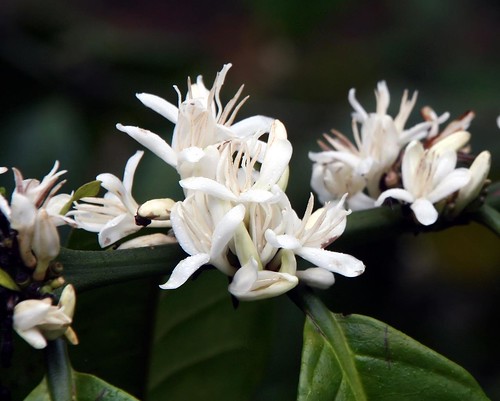 Coffee flowers in Indonesia. Photo by Deepak Bhatia on Flickr.
Coffee flowers in Indonesia. Photo by Deepak Bhatia on Flickr.
Coffee ripens unevenly on the branch and will not ripen after it is picked, so each tree has to be picked multiple times by hand.
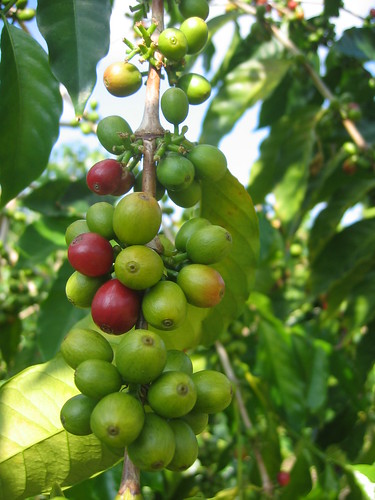 Coffee Cherries. Image by Rebecca Stanek on Flickr.
Coffee Cherries. Image by Rebecca Stanek on Flickr.
A basket of freshly-picked ripe coffee cherries:
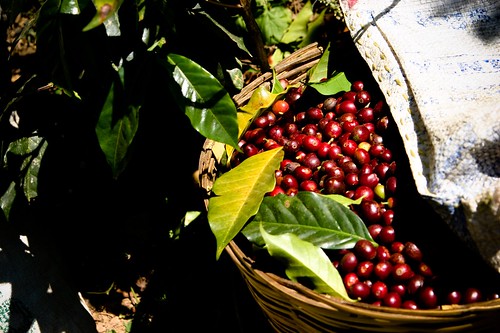 Beautiful coffee cherries. Photo by Jake Liefer on Flickr.
Beautiful coffee cherries. Photo by Jake Liefer on Flickr.
Density is an indicator of cherry quality, so machines that use water to sort the cherries are often employed. More precise sorting is also done by hand.
 A man sorts coffee to be dry processed. Photo by Jake Liefer on Flickr.
A man sorts coffee to be dry processed. Photo by Jake Liefer on Flickr.
When the coffee has been sorted, the outer pulp of the cherries must be removed. With "water-processed coffee," this is accomplished using a wet mill, a machine that mechanically removes the outer skin and pulp layer. After the coffee is pulped, it is allowed to ferment for a short period of time before being spread out to dry. The coffee is turned frequently until it is dry, and then the outer layer of skin, or parchment, that covers the coffee bean is removed.
Dry-processed coffee is a little different. The whole cherries are allowed to ferment and dry out in the sun before the outer layers are removed. This process is riskier because changes in the weather greatly affect the quality of the coffee, but when it works, dry-processed coffee can have some unique and intense flavors. Arabian Mocha Sanani is one of my favorites that is processed this way.
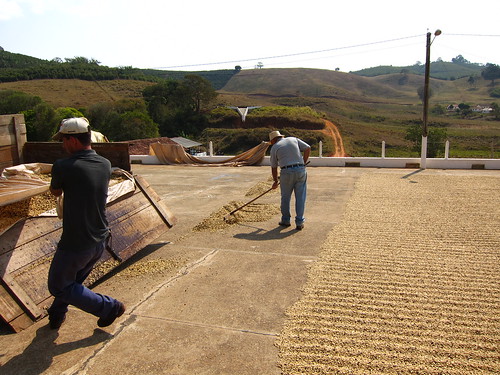 Coffee drying in Brazil. Photo by Caffe Vita on Flickr.
Coffee drying in Brazil. Photo by Caffe Vita on Flickr.
Once the parchment has been removed, the coffee is sorted for defects, particularly for broken or shriveled beans. This can be done by machine, but for higher-quality coffees, it is often done by hand. The green coffee is stored in burlap (jute) bags and shipped around the world.
 Three women separate defective green coffee beans by hand in Nicaragua. Photo by Peter Abrahamsen on Flickr.Coffee buyers select the coffees they want to use by a method called cupping, and buyers will taste hundreds of coffees until they find what they are looking for.
Three women separate defective green coffee beans by hand in Nicaragua. Photo by Peter Abrahamsen on Flickr.Coffee buyers select the coffees they want to use by a method called cupping, and buyers will taste hundreds of coffees until they find what they are looking for.
Green coffee is stored in warehouses until it is ready to be roasted. A machine like this is used
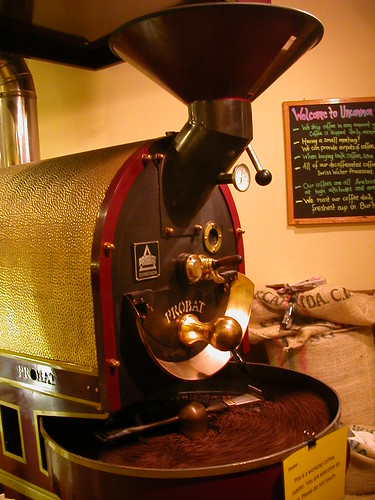 A Probat drum roaster. Photo by Justin Henry on Flickr.
A Probat drum roaster. Photo by Justin Henry on Flickr.
to turn the coffee into this:
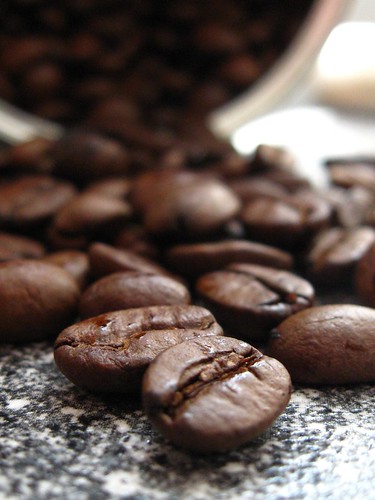 Coffee beans ready to be ground. Photo by Selma Broeder on Flickr.
Coffee beans ready to be ground. Photo by Selma Broeder on Flickr.
From there, the coffee is ground, brewed and poured. Mmm.
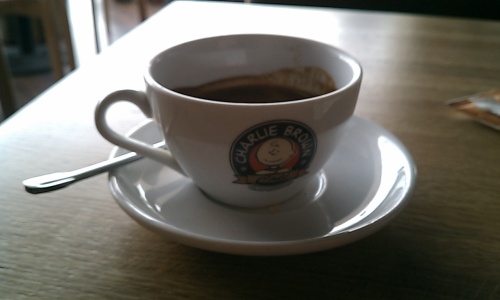 It even puts a smile on Chuck's face
It even puts a smile on Chuck's face
I hope this gives some of you a better idea of where coffee comes from. As you can see, coffee takes quite a trip from the tree to your cup!



Reader Comments (2)
Very Interesting! I do have one question. How do the buyers taste the coffee to decide what they want to buy before the beans are roasted?
Good question. They roast the beans first. There are sample roasters at the buying sites (smaller than a commercial-size roaster). Each of the coffees is given a 'cupping roast', a lighter roast that allows the flavor profiles to come through. Buyers then cup the coffee before purchasing them.